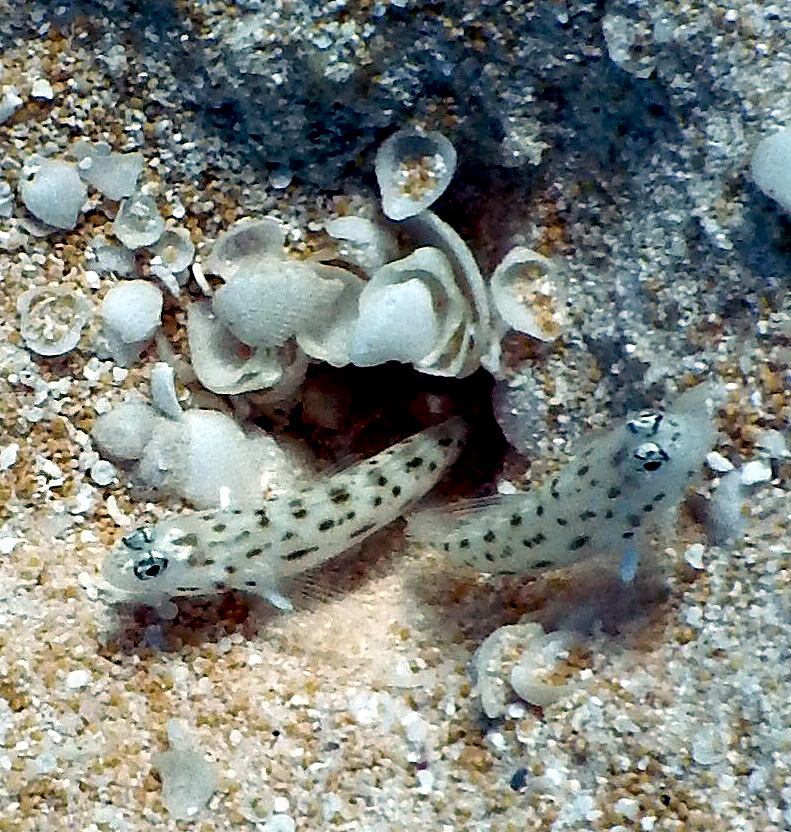Published in the Ocean Watch column, Honolulu Star-Advertiser © Susan Scott
July 1, 2013
While waiting for my car to be serviced last week, I went through a stack of mail I had pulled from the box as I left home, and found a local marine guide I ordered. I put the book on my lap, and it opened to gobies.
“Gobies form by far the largest family of marine fishes,” the author wrote.
 Two gobies retreat toward a hole dug by their shrimp roomies.
Two gobies retreat toward a hole dug by their shrimp roomies.
©2013 Susan Scott
This came as a surprise because I see so few. Marine gobies, though, are apparently abundant. It’s just that most are so small and secretive, we snorkelers and divers rarely notice them.
The average goby is about 4 inches long, and even that’s big compared with some. The littlest goby, Trimmatom nanus, is the smallest vertebrate in the world, two-fifths of an inch long when fully grown. The tiny fish lives in the Western Pacific and Indian oceans but is not found in Hawaii.
Gobies are hard to spot because nearly every carnivore on the reef preys on them, and therefore gobies spend much of their lives hiding.
Some species live in burrows they dig themselves, using their large mouths to haul away rocks and sand. Many tuck into cracks in the reef, and others reside on coral surfaces, hovering close to a nearby hideout.
Then there are the gobies that trade labor for guard duty. Known as shrimp gobies, the fish live in pairs with a pair of snapping shrimp, two very different couples sharing a single abode.
The shrimp dig out and maintain the burrow in sand or mud, constructing an arched doorway of coral, rock or shell bits. The shrimp, nearly blind, welcome the fish as lodgers because gobies have excellent vision and serve as sentries, twitching their tails when danger approaches to warn the shrimp to duck inside.
This is symbiosis at its cutest. While snorkeling in the Tuamotus, I watched two alert gobies stand guard, one on each side of the burrow, as their two shrimp roomies shoveled out clumps of sand. When I lowered my camera near the entrance, the fish backed up (pictured) and the shrimp retreated. With the lens even closer, the fish joined their shrimp pals in hiding. Seconds later I saw two bright eyes peek out, checking to see whether the coast was clear.
About 2,000 goby species exist in the world, but because their short-lived larvae don’t often survive long distances, Hawaii hosts only 34. One is a 2.5-inch-long shrimp goby, common in Kaneohe Bay’s shallow flats.
So writes John Hoover, author of the book I was reading, “The Ultimate Guide to Hawaiian Reef Fishes, Sea Turtles, Dolphins, Whales and Seals.” The new book felt like an old friend because I keep giving my copies away as gifts. This was my fifth copy.
Hoover’s book is my favorite marine reference at home and on the boat. And now it’s a favorite for making waiting-room time fly by.